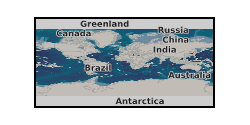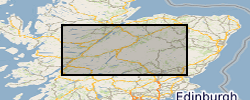text file
Type of resources
Topics
Keywords
Contact for the resource
Provided by
Years
Formats
Representation types
Update frequencies
-

Locations of samples collected to constrain the recent activity on normal faults across Nevada. The geological samples will be used to measure the amount of exhumation that different normal faults of the Basin and Range experienced over the last 5 million years. The samples have been collected from granitic rocks that are expected to yield apatite crystals. (Uranium-Thorium)/Helium thermochronometry will be conducted on these samples to determine the cooling history of rocks from temperatures of approximately 70 degrees celsius. The samples are collected across Nevada at locations close to the fault to determine the most recent stages of exhumation. The ranges sampled are the Wassuk Range, White Range, Toiyabe Range, South Egan Range, Schell Range, Wheeler Range, House Range, Wasatch, Deep Greek, Ruby Range, Cortez Range, Humbolt Range, Dixie Valley, and Carson Range. Samples weigh approximately 2kg each. This sample coverage will constrain extension rates across the Basin and Range which is of interest to geologists, geodynamicists, and researchers interested in fault hazard.
-

These data contain the shear modulus and attenuation of Vermont antigorite serpentinite in the seismic "low" frequency range, as functions of oscillation period (ranging from 1 to 1000s) and temperature during staged cooling from 550 degrees C down to room temperature, at a confining pressure of 200 MPa. This dataset is used and fully described/interpreted in the paper: David, E.C., N. Brantut, L.N. Hansen and I. Jackson, Low-frequency measurements of seismic velocity and attenuation in antigorite serpentinite, submitted to Geophys. Res. Lett.
-

Magnetotelluric (MT) time series including the September 2017 magnetic storm at 7 sites in the Scottish Highlands collected by Fiona Simpson (University of Southampton) and Karsten Bahr (University of Göttingen) using Göttingen RAP dataloggers, Magson fluxgate magnetometers and Filloux-type electrodes. Data acquisition methodology is described in F. Simpson and K. Bahr, 2005. Practical Magnetotellurics, Cambridge University Press, London pp. 254, 2005, ISBN: 9781108462556, DOI: 10.1017/CBO9780511614095 This dataset is described in: F. Simpson and K. Bahr, 2020a. Nowcasting and validating Earth’s electric field response to extreme space weather events using magnetotelluric data: application to the September 2017 geomagnetic storm and comparison to observed and modelled fields in Scotland, Space Weather, accepted, doi pending. F. Simpson and K. Bahr, 2020b. Estimating the electric field response to the Halloween 2003 and September 2017 magnetic storms across Scotland using observed geomagnetic fields, magnetotelluric impedances and perturbation tensors, Journal of Space Weather and Space Climate, accepted, doi pending.
 NERC Data Catalogue Service
NERC Data Catalogue Service